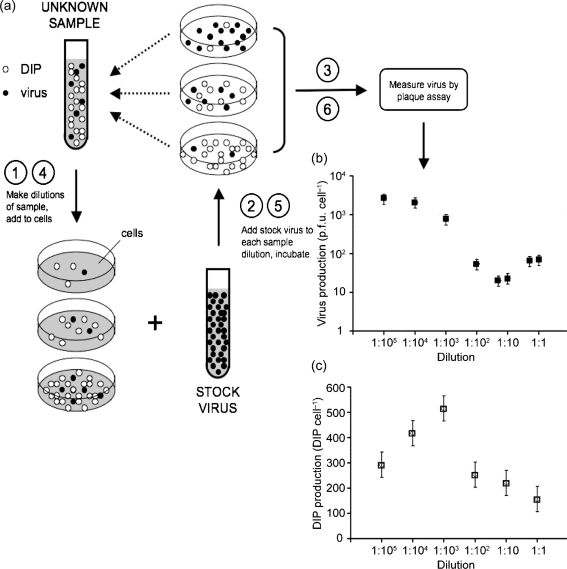Fig. 1.
(a) Quantifying how DIPs affect production of virus and DIPs by co-infected cells. The yield-reduction assay is used to quantify inhibitors of virus growth, such as DIPs, based on their ability to reduce yields of virus progeny from infected cells (steps 1, 2, 3). Extension of the yield-reduction assay enables one to use measures of viable virus to deduce how DIPs affect their own production from co-infected cells (steps 1, 2, 4, 5, 6). (b) Effect of DIP level on virus production from co-infected cells. Different dilutions of a DIP sample were combined with excess virus to create a range of infection conditions spanning from cells infected primarily with virus (made with a 1 : 105 dilution of DIP sample) to cells co-infected with virus and DIPs (made with a 1 : 1 dilution of DIP sample). Virus production from these cells was quantified by plaque assay. (c) Effects of DIP level on DIP production from co-infected cells. The productivity of DIPs from the cells under the same co-infection conditions as (b) was deduced by measured reductions in virus yield.

